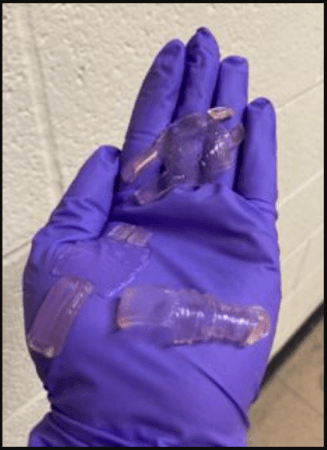Movies, television shows, and books have envisioned various types of robots for decades: from human-like androids to nanobots that crawl within blood vessels to machines emulating animals. While some are eventually becoming a reality, such as the famous 'Sophia' and 'Atlas', others still remain figments of our imagination. Now, scientists have managed to bring one such automated creation to life: a gelatinous robot that crawls like a worm when the temperature changes.
In a new study, scientists from Johns Hopkins University have described an inchworm-inspired robot that is powered exclusively by the change in temperature. Dubbed the 'gelbot', the robot shrinks or swells depending on the variation in the temperature of its surroundings. This causes the robot to move in a particular direction without relying on a power source to facilitate its movement. The findings were published in the journal Science Robotics.
"It seems very simplistic but this is an object moving without batteries, without wiring, without an external power supply of any kind—just on the swelling and shrinking of gel," said Dr. David Gracias, senior author of the study, in a statement. According to the authors, the robot may aid in the delivery of drugs to specific organs within the body in the future.
Making a Robot Crawl

Generally, robots are manufactured using hard materials such as plastics and metals. This serves as the primary obstacle in the pursuit of creating robots that are suitable for biomedical applications. However, a subfield of robotics known as soft robotics aims at addressing this challenge.
Soft robotics is centred around mimicking the motion of soft-bodied living organisms—water-based or hydrogels hold great promise in this field. Scientists have previously evidenced the utility of thermoresponsive—responding to temperature—hydrogels that shrink or expand to create smart structures. However, such gels are bound by limitations such as the need for diverse layers of materials for driving unidirectional motion.
Through the current research, the authors demonstrated that the contraction and expansion of hydrogels can be effectively utilised: 1) for inducing to and fro movements in robots on flat surfaces; and 2) to make them crawl with a wave-like, oscillating motion in a particular direction.
Potential to Revolutionise Medicine

The 'gelbot' described in the study was created using 3D printing technology. Produced using gelatine, the robot is powered entirely through the alteration of temperature. Fluctuations in temperature, between 30-60 Celsius, can cause the gelbot to either shrink or swell. "Our study shows how the manipulation of shape, dimensions and patterning of gels can tune morphology to embody a kind of intelligence for locomotion," remarked Dr. Gracias.
According to Dr. Gracias, the use of 3D printing makes the mass production of these robots an easy endeavour. He stated that the gelbots can serve various purposes in the future, particularly delivering drugs to specific target organs within the body. They could also function as marine robots that monitor and patrol ocean surfaces.
Dr. Gracias expressed hope of training these gelbots to move in response to human biochemicals and biomarkers. His team intends to explore other shapes and forms inspired by marine organisms and worms—along with the incorporation of sensors and cameras in their design—next.















